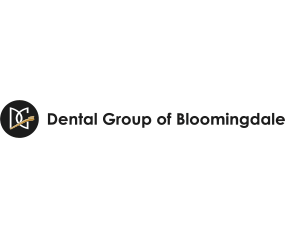Top-Rated Periodontist in Bloomingdale, IL
If you want to keep your teeth in good shape, you must consider how your gums are doing. This tissue provides the base needed to support the construction of your mouth and hold the teeth in place. Therefore, it’s imperative to use periodontal treatments as a preventative strategy to lessen the likelihood of some of the long-term complications of gum disease.
What Causes Gum Disease?
Toxins produced by bacterial plaque, the root cause of gum disease, can damage your teeth and gums. Plaque becomes tartar if it is not removed. Tartar buildup cannot entirely be stopped by frequent brushing and flossing, despite the importance of these practices. Making appointments with a dental professional for regular cleanings is essential if you want to get rid of the plaque that has built up and prevent gum disease. Bacterial plaque, which causes gum disease, creates toxins that can harm your teeth and gums. If plaque is not eliminated, it hardens into tartar. While regular brushing and flossing are crucial to preventing tartar buildup, they cannot totally stop it. So, it is important that you schedule regular cleanings with a dental professional to remove the hardened plaque and prevent gum disease.
Our team at the Dental Group of Bloomingdale offers a wide range of periodontal treatments to protect your gums. Here is an overview of the services that are available:
Periodontal surgery is often suggested for patients with gum disease. But, these treatments can also be helpful for patients who are interested in the aesthetic benefits. Whether you are suffering from gum recession or your teeth are covered too much by the gums, cosmetic treatments can be used to improve the appearance of your smile.
These cosmetic treatments include crown lengthening to remove excess gum tissue covering the teeth, or a soft tissue graft to cover tooth roots exposed from gum recession. We also offer bone grafting to preserve the ridge/socket in the mouth and prevent bone collapse.

Some people with a “gummy smile” feel self-conscious that the gums cover so much of the surface of the teeth. Excess gum tissue can cover a portion of the teeth, which has a negative impact on the overall appearance of your smile. Crown lengthening is an option to consider if you want to reshape the gum line and re-contour the gums to improve the tooth-to-gum ratio.
This treatment can be used for cosmetic reasons, or there are times when it is suggested with other dental procedures. For example, there are times when crown lengthening is needed before a tooth restoration is done.

Everyone has a natural muscle attachment called a frenum, located between the front teeth. This attachment connects the gum to the inner part of the lip. If the frenum is attached closer to the biting surface of the tooth, then it could exaggerate the pull on the margins of the gums. As a result, gum recession can occur. Another problem from a large frenum is that it can cause a gap between the teeth.
These dental problems can be fixed with a frenectomy, which removes the frenum. This simple treatment is often used before orthodontic treatment, with a gum graft, or in a preventive way to avoid gum problems in the future.

Traditional dentistry methods have treated gum disease by eliminating pockets of infection, trimming the infected tissue, and re-contouring the bone when needed. Now, we have technical advancements that make it possible to guide the regeneration of the bone and tissue, helping to stabilize teeth that are in danger.
During this treatment, the gum pockets are cleaned to remove the infection. Then a membrane is placed to cover the pocket, blocking the soft tissue that grows fast. As a result, the slower-growing bone can regenerate in the area.

If the gums a receding, then the body no longer has the natural defense in place to protect the root of the tooth. So, your dentist might suggest gum grafting to reconstruct the natural cover that is needed to maintain the foundation and health of your teeth.
A gum grafting treatment involves removing a thin piece of tissue from the roof of the mouth. This tissue is placed over the area where the gum is receding, helping to cover the exposed area of the root. The procedure offers the long-term results that are needed to prevent weakening teeth due to gum recession.

No cut, no suture, no fear! Just because you need gum surgery doesn’t mean that you need to go under the knife. We have top-notch lasers that can be used to treat the gums, speed up healing time, and improve the overall results of the treatment. This minimally-invasive approach is beneficial to reduce the risk of recurrent periodontal infections and support the overall health of the gums.

Osseous surgery, commonly called a gingivectomy or pocket reduction surgery, is used to access the roots of the teeth so that bacteria and tartar can be removed. This treatment might be suggested if you have advanced stages of periodontal disease, helping to save your teeth. Even though it is called a “surgery,” this treatment is like a thorough dental cleaning.
The benefits of osseous surgery include the reduction of bacteria that cause gum disease, reducing the risk of bone loss due to gum inflammation, improving the appearance of the smile, and making it easier to care for the teeth and gums at home.
During the procedure, the gums will be numbed. Then, the Periodontist will cut around the affected tooth to remove the gum tissue from the bone. Accessing the root of the tooth allows the area to be cleaned, then the gums are stitched back into place so that they can heal.

Regular checkups and cleanings are required to maintain good gum health. During your cleaning, we will use specialized dental tools to remove hardened plaque. Additionally, a screening will be done to determine the health of your gums. By measuring gum depth in pockets of infection, we can identify the amount of inflammation and damage that has been done by gum disease. Then, treatments can be suggested to help you avoid more problems from the periodontal disease.

If you have periodontal disease, then the initial appointment will include a thorough cleaning with scaling and/or root planing. These treatments are designed to remove the built-up tartar that is causing the disease and inflammation.
Scaling targets the area of the root below the gum line to remove hardened plaque. By using an ultrasonic scaling tool with irrigation, an antimicrobial agent can be delivered under the surface of the gums to reduce the disease-causing bacteria. Root planing removes surface dentin that is embedded with tartar, toxins, and microorganisms. By smoothing the root of the tooth, it prevents the colonization of bacteria and promotes healing.

Schedule a Consultation With Our Licensed Periodontist
We urge you to book an examination regardless of whether you have gum disease or wish to learn more about preventing periodontal disease. With our variety of peridontal treatment options, our staff at Dental Group of Bloomingdale is here to help you keep healthy teeth and gums.
Bloomingdale's #1 Periodontist - Gum Disease Dentist Near Me - Best Periodontist in Carol Stream & Glendale Heights, IL
APPOINTMENT
REQUEST FORM




